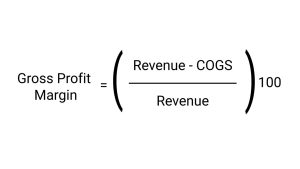
If you’re in the pest control business, then you have to know how to calculate your gross profit margin.
But what exactly is gross profit margin, and why does it matter?
Here are the 4 things that we’ll cover in this article:
- Define gross profit margin
- How to calculate it
- What is a good gross profit margin
- How to increase your gross profit margin
Define gross profit margin
Gross profit margin is one of the most important metrics to measure a company’s profitability. It is calculated by subtracting the total cost of goods sold from gross profit and then dividing that number by gross sales. A healthy gross profit margin typically reflects good management, strong pricing power, and efficient operations, while a low gross profit margin can indicate inefficiency, weak pricing power, or oversupply of products. Knowing this key financial indicator helps companies identify areas for improvement and potential strategies for achieving greater success.
To achieve profit margin calculations with accuracy and efficiency, it is important to make sure you are familiar with the right process. The formula for Gross Profit Margin is Net Sales – COGS / Net Sales.
For businesses in the pest control industry, creative profit margins can be a great way to increase profit and company growth. This means taking into consideration all of the expenses associated with providing pest control services and subtracting that from the total revenue of pest control services. It’s also important to take into account any discounts given, such as promotional campaigns or promotional pricing rates when calculating profit margins. Overall, calculating gross profit margins can help determine whether your business is performing at its best by giving valuable feedback on how well you’re controlling costs.
What is a good gross profit margin for a pest control company?
The gross profit margin is a popular metric used to measure the effectiveness of a business’s cost management strategies. A good gross profit margin varies depending on what type of business you are running, but overall, businesses should aim for somewhere between 55-60% depending on their industry and operating costs. Understanding what an optimal gross profit margin is for your company allows you to better allocate resources and helps you to identify opportunities to increase operational efficiency.
How to increase your gross profit margin?
Increasing profitability is an essential goal of any organization. A key way of doing so is to increase your company’s gross profit margin. To increase gross profit margin, businesses should analyze their pricing strategy and adjust accordingly if needed. Additionally, companies can monitor and reduce expenses associated with inventory to increase the bottom line. Last but not least, adding more profitable products and services can be a great way of improving profitability. Taking the time to review the above strategies can go a long way in driving your organization’s success.
Now that you know what gross profit margin is and how to calculate it, you can begin working on ways to improve your company’s finances. A good gross profit margin is usually between 50-60%. If your company falls outside of this range, don’t worry! There are plenty of strategies you can use to increase your margins.
Are you interested in learning more about how to improve your bottom line?
Schedule your 30-Minute Demo on Patrick’s calendar below.
